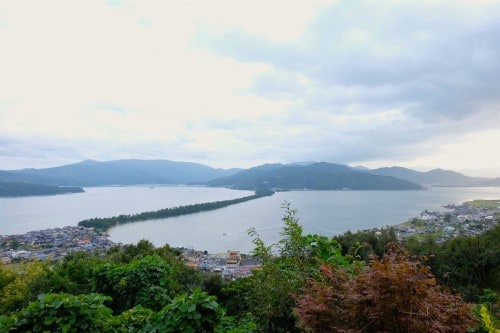
Have you ever heard of the Nihon Sankei or the Three Celebrated Views of Japan? This canonical list is not just a list for tourists created on the internet; it dates back to 1643 and was written by Japanese scholar, Hayashi Gaho. The Nihon Sankei designates three locations in Japan to be as beautiful and wondrous as the seven wonders of the world, and according to Hayashi Gaho they are Miyajima in Hiroshima, the Matsushima Islands in Miyagi, and Amanohashidate, of northern Kyoto prefecture.
Pictured above, Amanohashidate is a breathtaking sandbar that splits the Miyazu Bay in half with 3.6 kilometers of sandy beaches, walking and biking trails, and over 8,000 beautiful pine trees. It is located in Kyoto Prefecture but it is quite far removed from the bustling and touristy former capital of Japan – in fact, it lies almost 80 km to the north. According to Japanese myths, Izanagi, the father of the sun goddess built a bridge to travel between heaven to earth, but the bridge fell to the ground to become what it is today: Amanohashidate, which translates to “Bridge to Heaven.”
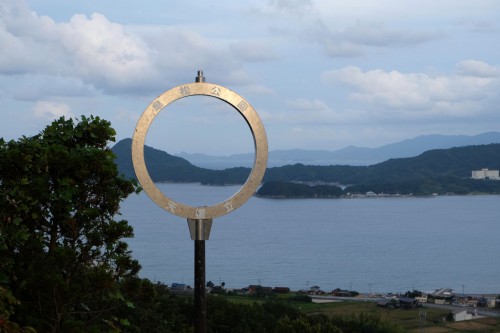
The bridge itself crosses the Miyazu Bay, connecting Monju in the south (near Amanohashidate station) and Fuchu Park in the north (near Ogaki Station). The mountains in both areas have lovely scenic views accessible by ropeways and paths, but I recommend starting in the south and traversing the sand bar to enjoy what the bridge itself has to offer before taking in the sights from on high at the northern end.
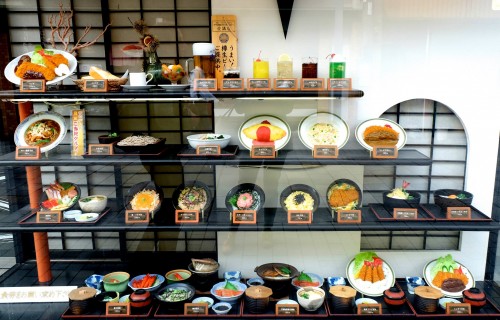
The southern end of the bridge near Amanohashidate station is more populated with souvenir shops, hotels, and restaurants, a small theme park, and the beautiful Chion-ji Temple dedicated to the bodhisattva Monja.
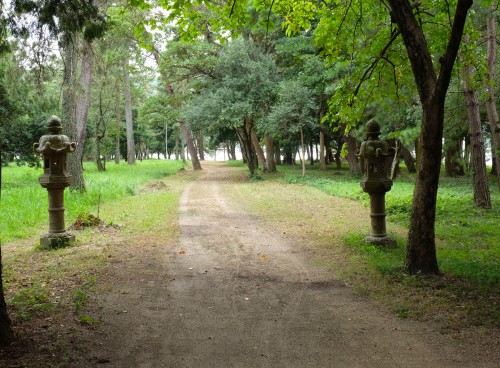
I recommend arriving at that station via the JR San-in and Miyazu lines from Kyoto, eat a nice lunch at one of the many restaurants around the station (hint: sashimi is very fresh in Northern Kyoto), and then rent a bicycle for the rest of the day to enjoy the town and the pine bar to the fullest. You can rent bicycles rather inexpensively, and can hold onto them until 18:00. Of course, if cycling is not your style, the sand bar is fully walkable – about 50 minutes on foot and 20 minutes by bike.
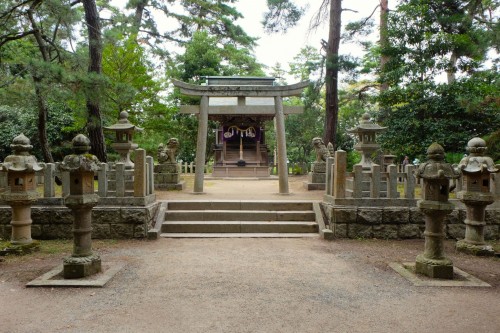
The path is filled with gorgeous black pines, sandy beaches, and happy travelers. Along the way you can spot Amanohashidate Shrine, where the king of the Eight Dragons is said to be enshrined. It is a very beautiful little shrine, and despite being right next to the seashore, it has a freshwater spring called “isokiyoshisui” for travelers to purify their hands in before approaching the shrine.
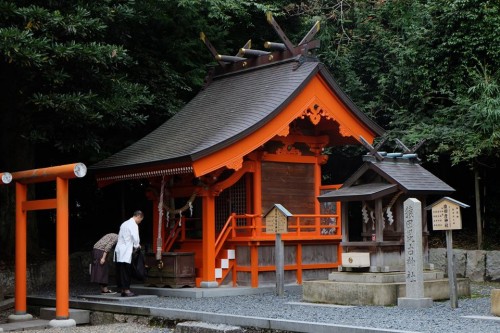
Once you reach Fuchu Park on the northern end of the bridge, you will find some more shops and restaurants as well as the Motoise Kono Shrine. It is a beautiful shrine, and historically the most important shrine of the Tango Region. Within the shrine grounds, there are a few more smaller shrines built in various architectural styles and a lovely pond.
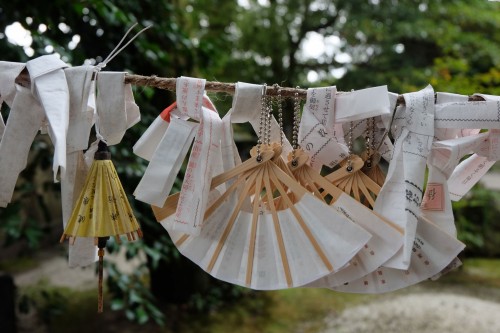
I had a lovely time walking around the shrine grounds and seeing many happy travelers who came from all over Tango to pay their respects. We parked our bikes, and headed up the ropeway to Kasamatsu Viewing Park at the top of the mountain.
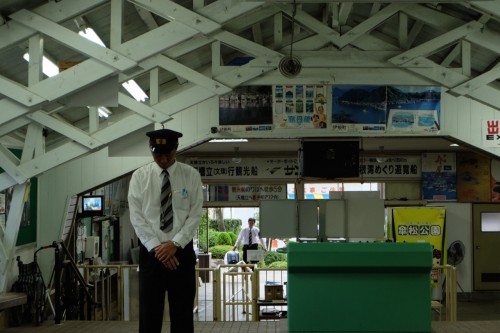
The view from Kasamatsu park was simply stunning! Even the design of the landing is quite modern and beautiful; the landing has railings made of glass so none of the view is obstructed. I was very happy to take many photos here; its the perfect place for a family portrait!
Earlier, as I had walked around the town, I started to notice a similar motif everywhere – the bizarre image of a person looking through their legs at the beautiful scenery. As I grew more and more curious, I finally asked my Japanese friend who laughed and explained all about Matanozoki, or “to view between your two legs.”
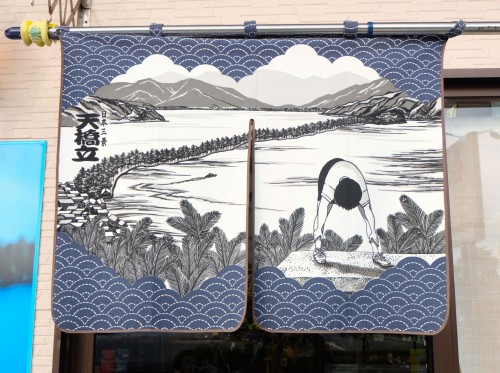
Amanohashidate is well known as a place to do Matanozoki, in which you turn your back to the view, bend over and look through your legs so that the scenery is upside down. Doing Matanozoki at Amanohashidate reveals another side of the area, the mythical “Hiryukan,” or view of the flying dragon. Upside down with the sea as the sky, the sand bar appears as a dragon flying through the sky. At Kasamatsu, there are even special viewing platforms for guests to safely view the scenery through their legs.
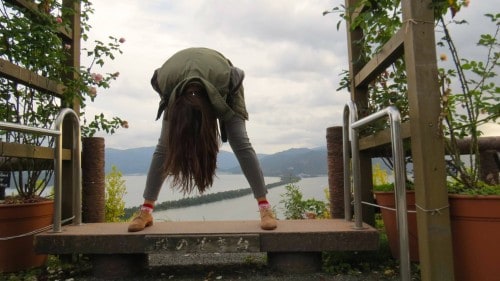
So don’t be shy, embrace the Matanozoki! See for yourself if you can imagine that dragon in the beautiful sky. Head to Amanohashidate for a lovely day trip – you won’t be disappointed by this historically celebrated view of Japan.
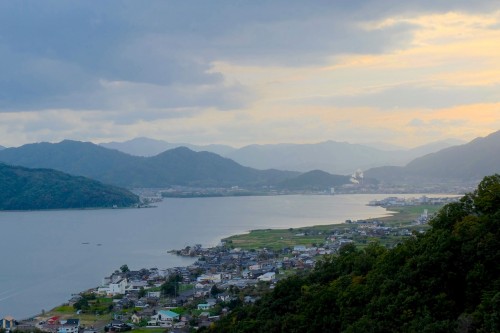
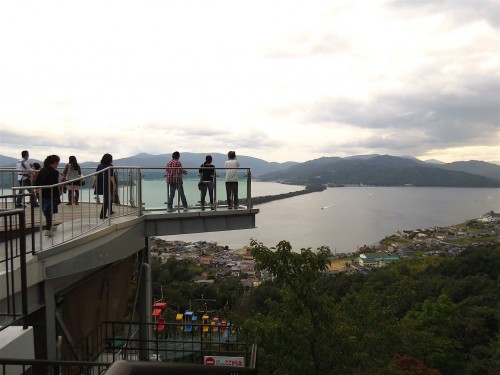
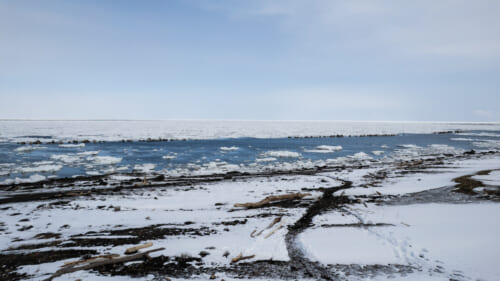
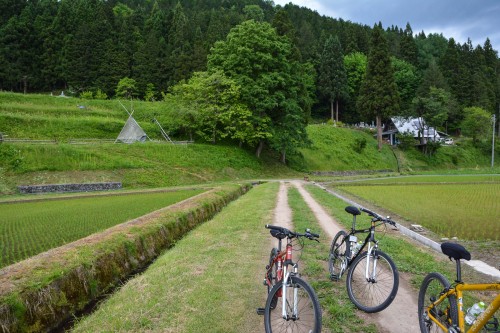
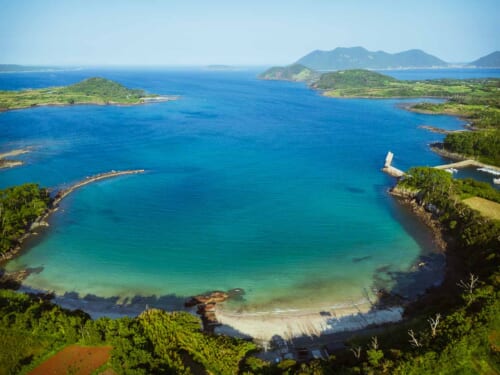
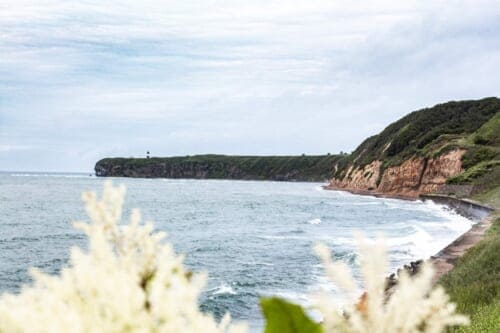
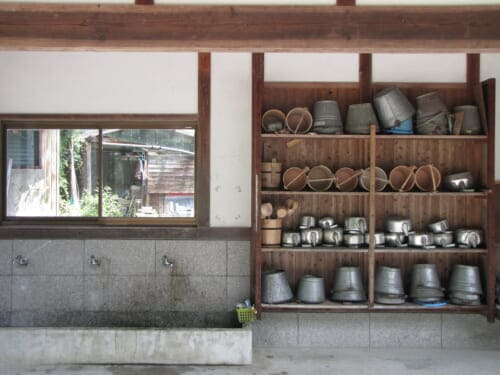
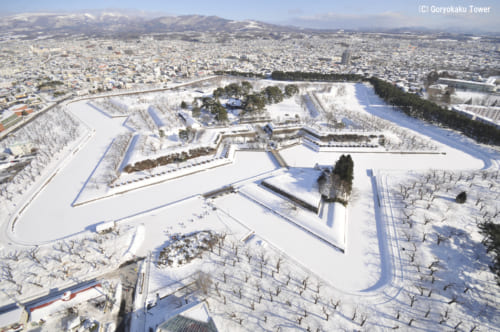
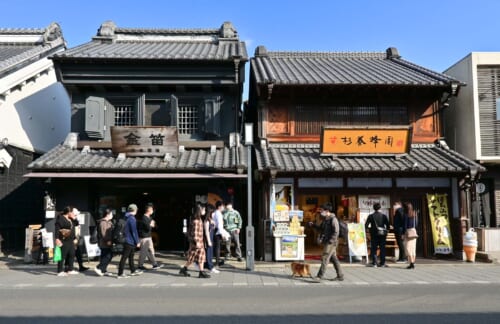
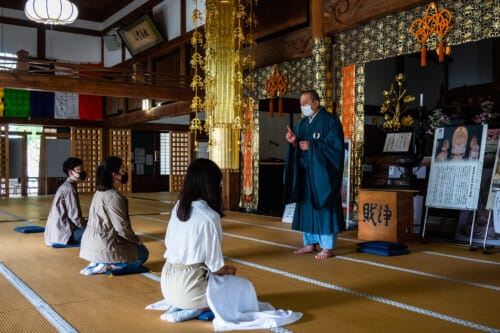
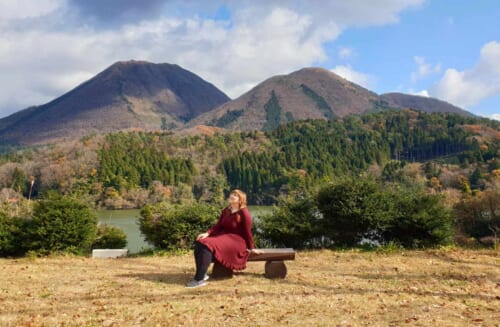
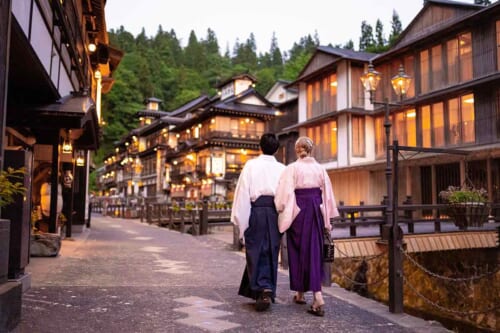
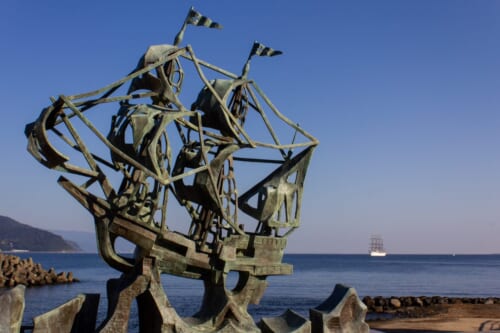


No Comments yet!